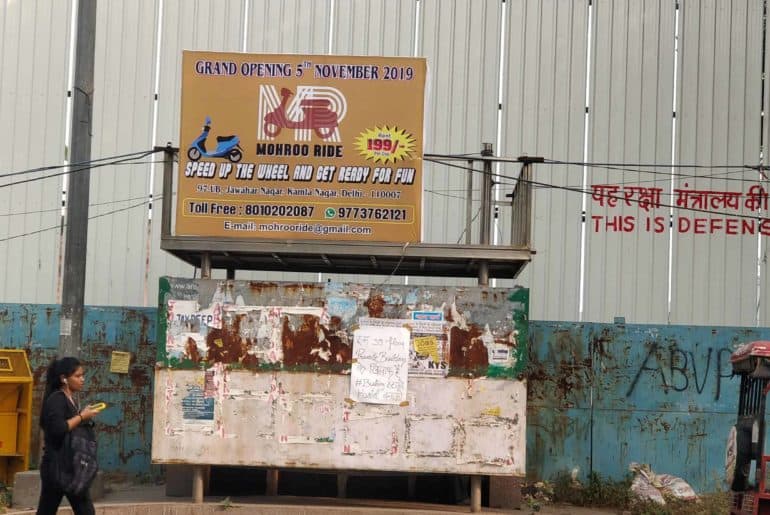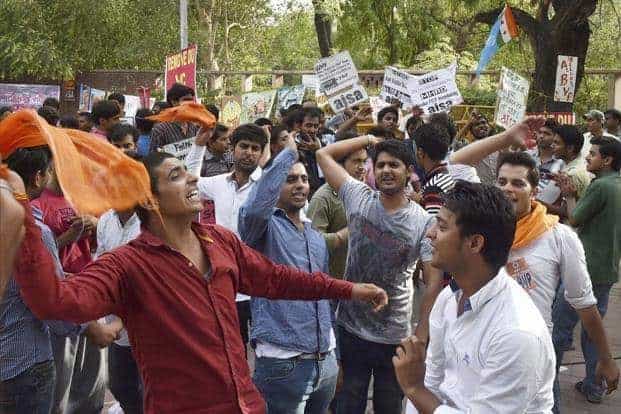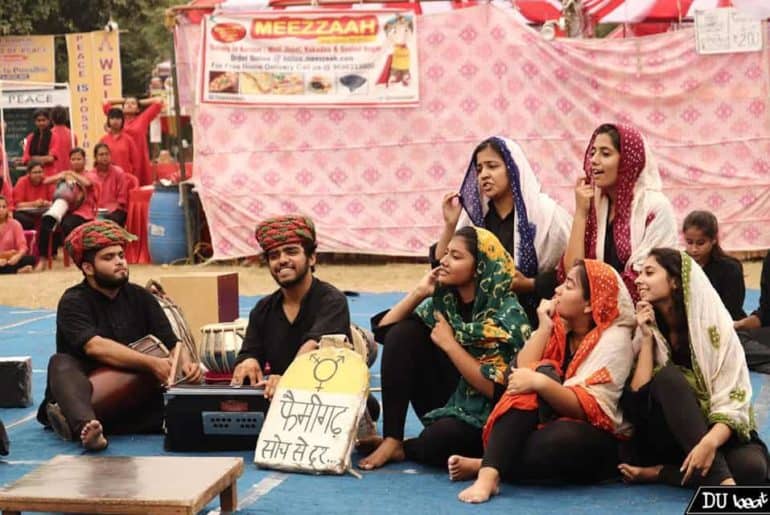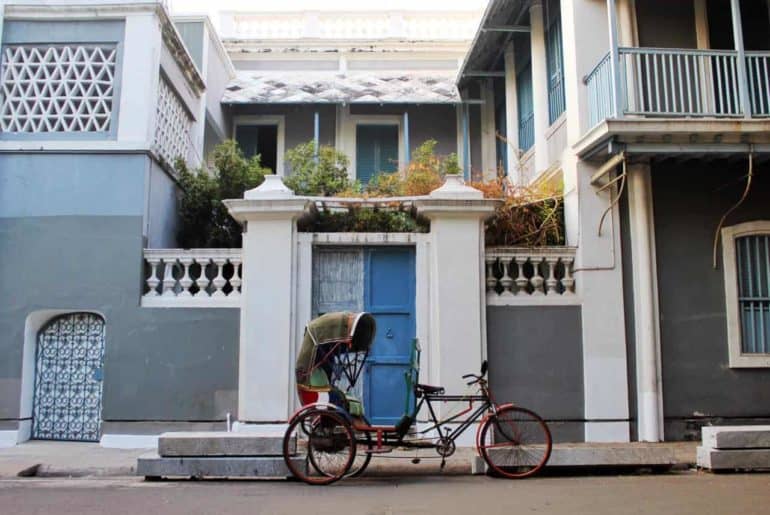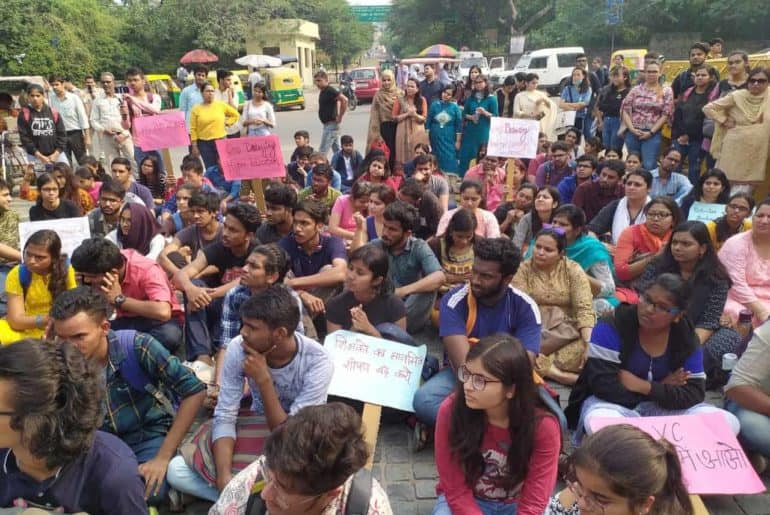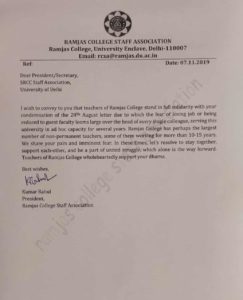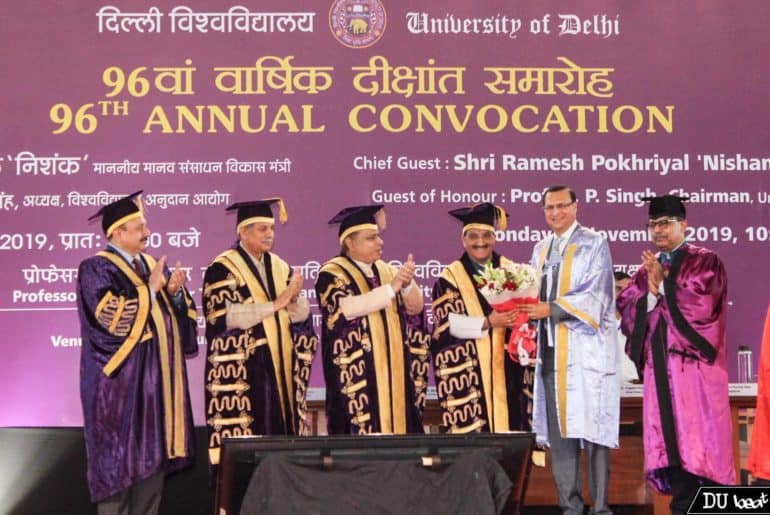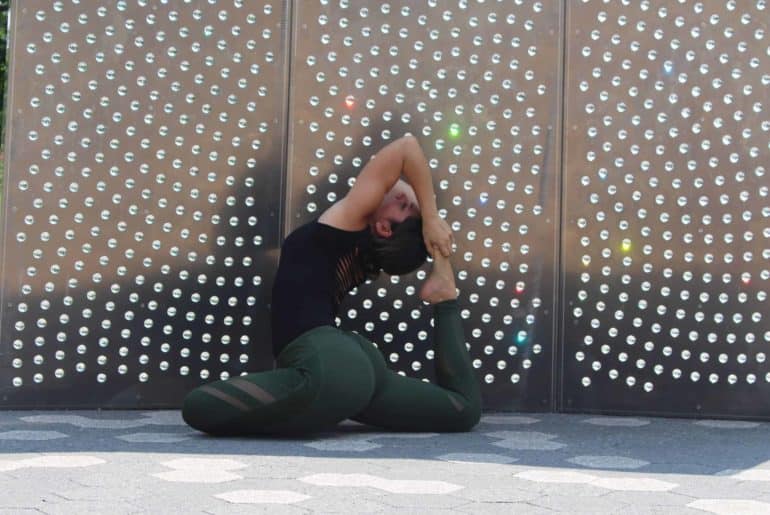Toilets experience discrimination when it comes to mainstream discussion. Although it is the basic necessity for health, sanitation and hygiene, and an integral part of gender equality, the plight of the toilets has not been given due attention. The toilets of Delhi University and the inherent gender divide is an exemplary example of this.
Toilets are an essential private place whose significance cannot be denied. Toilets have their own long journey consisting of the faceless sanitation workers and sewage to the manual scavengers involved. The United Nations has declared 19th November as the World Toilet Day which is about inspiring action to tackle the Global Sanitation Crisis and help achieve Sustainable Development Goal (SDG) 6, which promises sanitation for all by 2030. The theme for this year is “Leaving no one behind”.
Public toilets are in a dismal state with respect to hygiene, sanitation and other logistics which can be seen in the University space too. Although all the colleges have toilets, there is a dearth of public toilets especially for women in the varsity. Since North and South Campus are open campuses, the college toilets are not available to everyone making public toilets an absolute necessity in the Campus area.
There are limited number of public toilets available and in addition to that there are standee toilets on footpaths for men. People peeing on the walls of the Campus is not a rare sight and therefore the conception of these toilets is understandable. However, these toilets can never be an alternative to clean public toilets.
One of such standee toilets can be seen on the footpath of Chattra Marg in North Campus. The filthy smell emanating from it makes it very uncomfortable for the pedestrians walking on the footpath. And since they are right on the footpath, and there are no proper doors, it poses discomfort to females especially.
In view of the grim state of the public toilets Simran Dhingra, a third year student of the University commented, “Alas! Being a girl I am forced to use the public washrooms during that time of the month to change the pad, and that is the most traumatising experience for me. It just makes me feel sick and vomitish. The washrooms stink and I literally have to wrap a scarf around my face while entering those washrooms.”
Another student, Shania Mohapatra commented, “I never use public toilets because of the hygiene and bad odour emanating and there are times when I hold my pee for hours and hours till I reach home as I am scared of getting Urinary Tract infections.”
The other aspect of this entire conversation is the alternative present to these street washrooms, college washrooms.
As per NDTV’s report on Delhi Education and facilities, only 43% of colleges have clean, highly maintained college washrooms. Others either don’t have proper sanitation or aren’t maintained well.
Bhumi Raj, Daulat Ram College said “The washroom of the third floor is almost broken. Even though after many complaints, Administration has done nothing so far.”
Struggle for proper sanitation has been part of many Indian movements, yet these haven’t reached our DU colleges yet. Although, it is clearly specified to even have sanitary napkins in restrooms, most college washrooms aren’t even equipped with basic necessities of soap, toilet paper even at times water.
A Student of Delhi University, in conditions of anonymity, told DU beat, “Just recently for more than 2 weeks, most washrooms on our floor didn’t have water. And this is a very common thing to happen in our college.”
The lack of proper facilities has even made the DU students master the art of bladder control. As many students prefer waiting with bursting bladders than to use the college washrooms, in itself it’s a health hazard.
A student said, “People in rural areas suffer a hundred times more, but even students like us, studying in an urban university, have to control our pee because of the absence of a clean and usable washroom. With a daily practice session from 8:30 a.m. to 5:00 p.m., most of us have mastered the art of controlling our pee.”
On closer inspection, most of the students avoided using the College washrooms. Some had not even used it once. The reason for most of them was the same – dirty, stinky washrooms with no dustbins and soap. Hypocritically, some colleges ensure their washrooms are clean only when the National Assessment and Accreditation Council (NAAC) comes for inspection to grade the institute. However, the condition goes back to square one after a few days of the inspection. While the problem isn’t as severe in some colleges, certain colleges have an unimaginably bad condition.
A student of Ramjas College said, “Not all washrooms are clean. The ones in the corridors are smelly and unusable. There are no sanitary napkin dispensers.’ A student of Gargi college had a similar complaint. She said, “The washrooms stink terribly. The toilets are dirty and unflushed.”
The colleges of North Campus still have decent toilets with proper maintenance, but it only gets worse as one moves towards the South Campus colleges, and the conditions in Off-campus colleges are highly concerning. It exposes the pattern of the sad reality that the privilege of good washrooms is decided on the basis of one’s ability to meet cut-offs. Even the Staff washrooms remain relatively clean in every college.
Apart from this, Delhi University is also home to a number of students with physical disabilities from different parts of the nation who face real difficulty in general, the least the authorities could do is improve the constraints for them.
Gargi Tyagi, a student of Motilal Nehru College said, “Poor conditions of toilets are probably one of the biggest issues students face. After being around the campus, to different colleges, I observed that it’s mainly the top tier colleges that have their washrooms up to codes. The problem starts from the middle tier colleges where the washrooms do not even meet the usable standards. When it comes to toilets, girls washrooms requires more cleanliness in order for us to use them. It’s a real torture for when we enter the washrooms and find the seats to be unusable, no water to clean after ourselves, no soap to wash our hands or pigeon with its eggs in the nest and then we have to suffer all day without any washrooms around. Even after several applications, authorities fail to do anything about these conditions. I hope colleges decide to do something soon. Until then, I think we’re gonna have to hold it!”
Anisha Sharma, a student of Kamala Nehru College said, “I think that the toilets in our college are below average and could definitely be cleaner and more hygienic. As much as we could request our college staff to get them cleaned more often and take care of the plumbing, I think it’s also important to ask our students to maintain a level of hygiene- to always leave the toilet in the condition they would like to find and use it themselves.”
Taking about the standee washrooms that situate on the broken roads of south campus are far worse. There isn’t much that can be said about those washrooms without a complete face of disgust, yet, addressing them the biggest issue still remains. They’re on the middle of the footpath which take away the privacy of all students walking by. Many times, there’s liquid leaking out of those washrooms that clutters the path. However, sadly, the biggest issue is the lack of them. South Campus only has few of these toilets and they’re predominantly for men.
It’s incredibly distasteful to be called Institute of Eminence and the Capital of the Country without even catering to basic needs of a human. This is a dire issue that Delhi and the varsity must address in great detail. If not, most of the students will contract urinary infections, will be forced to stay at home and University will only give relevance when it’s time to fight over their attendance. Proper sanitation is necessary for not only health and safety, but dignity as well.
Feature Image Credit: Sriya Rane for DU Beat
Sriya Rane
[email protected]
Chhavi Bahmba
[email protected]
Avni Dhawan
[email protected]


